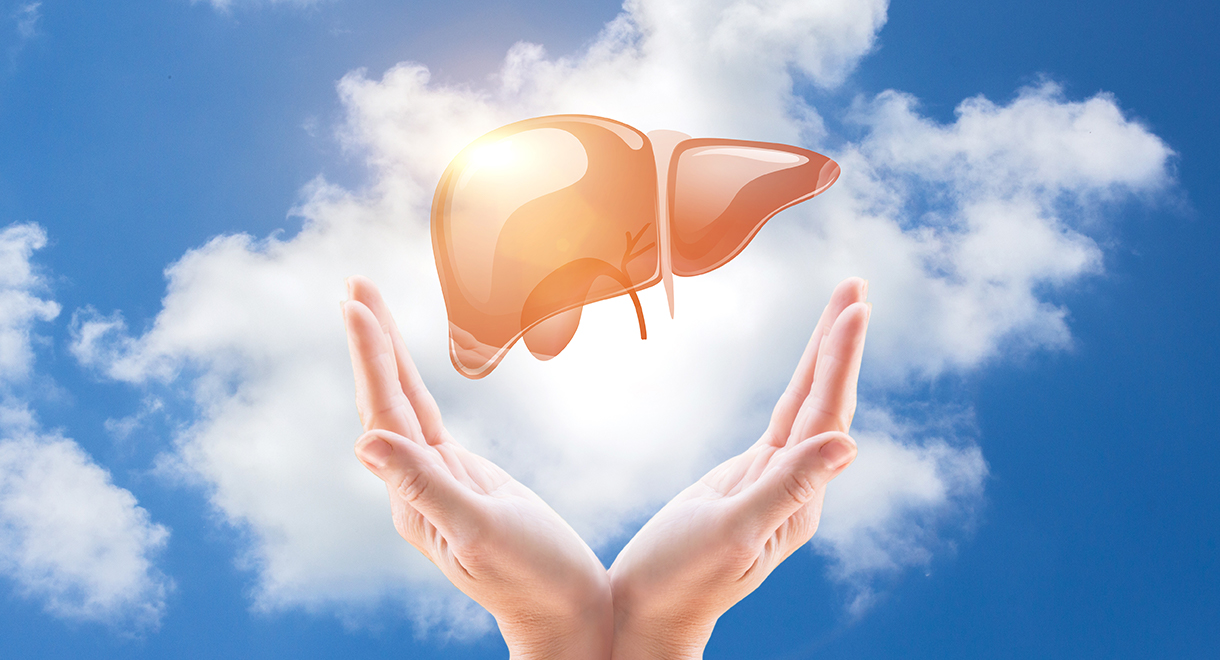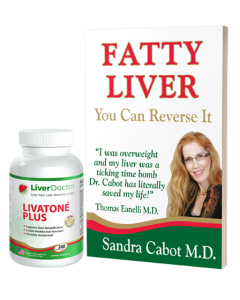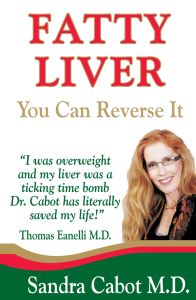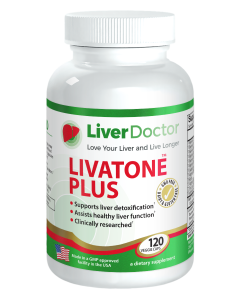

Improve Your Liver For Better Health
During the 1990s I observed that the number of patients I was seeing with liver problems was increasing at an alarming rate. In particular there were more patients with fatty liver and raised liver enzymes. Concurrently I read in the medical journals that there was an emerging epidemic of fatty liver. Today in 2021 the medical profession is still calling fatty liver disease a new epidemic, but I think it is well established and indeed is a pandemic of liver disease, as worldwide the incidence keeps climbing. It is also now common in children.
Why is this so important?
If you have fatty liver disease you are at greater risk of cardiovascular disease (heart attacks and stroke) and also cancer which can shorten your life. You are also at greater risk of diabetes and its complications. Most people with fatty liver disease die of heart disease, strokes or non-liver related cancers and not liver failure. This shows you that the liver must be healthy for the rest of the body to be healthy and we need to treat the cause.
The majority of people with fatty liver disease are overweight and battle to lose weight, which is not surprising. Be aware that some people with fatty liver disease are not overweight but still have an incorrect diet and nutrient deficiencies conducive to fatty liver development.
In those with a fatty liver the metabolism of carbohydrates is severely disturbed and causes fat to be stored in the liver. Excess fat may also be stored in other organs such as the pancreas as well as in fat (adipose) tissue all over the body. A fatty liver is swollen and clogged with high amounts of unhealthy fat which reduces the ability of the liver to function. Your liver is a filter that works continually to detoxify and cleanse your blood and you do not want it compromised by excess fat tissue.
It is easy to check if you have a fatty liver with a simple blood test for liver enzymes which may be elevated and an ultrasound scan of your liver to show its size and texture. If these tests are abnormal, you can have a more specialised test known as a fibroscan (liver elastography) which measures the amount of fibrous tissue in your liver. Fibrous tissue is hard and inflexible and can be compared to scar tissue which forms after severe damage to tissues. If there is a high amount of fibrous tissue inside your liver it will be stiff and this will show as a high score on your fibroscan.
Some types of fatty liver are not dangerous in that they will not progress to fibrosis (cirrhosis) and are categorised as Non-Alcoholic-Fatty-Liver-Disease (NAFLD). Another type of fatty liver disease called Non-Alcoholic-Steatorrhoeic-Hepatosis (NASH) is more serious in that there is much more inflammation in the liver which can gradually lead to fibrosis (cirrhosis) and this will show up on a fibroscan test.
I have been a medical doctor since 1975 and I have seen many patients with liver problems of all varieties, from fatty liver to liver tumors, biliary problems and liver infections. The one thing that I have witnessed is that the liver can take a lot of damage and still repair itself if you follow the correct recovery program. Indeed, the liver is the only organ in the body that can repair and renew itself after a large amount of its tissue is damaged or is surgically removed. I was so inspired by this that in 2004 I designed a clinical study with a team of medical doctors and naturopaths to investigate the effect of a low carbohydrate diet and a liver formula over 6 months in patients with fatty liver. The results were very positive and showed significant improvement – see study here
There are currently no approved drugs to treat fatty liver disease and the main strategies used today are a calorie restricted low fructose diet, weight loss and exercise. These strategies do work but need to be long term and some patients find it hard to maintain. Patients need to be motivated and followed up and tested to see the changes in their ultrasound scans and blood tests. When you see and feel the amazing improvements you will find it easier.
If you have fatty liver disease, I have found that reversal of this problem is accelerated by providing the liver with a therapeutic dose of Milk Thistle combined with nutrients that reduce liver inflammation and improve liver function. This is why I developed Livatone Plus with my team of doctors and biochemists.
Today Livatone Plus is a leading liver formula worldwide and has helped millions of people for over 25 years. LivaTone Plus is made in an FDA and GMP approved laboratory in the USA from the highest quality raw materials and is subjected to stringent quality control testing to exclude heavy metals, microbes and other possible contaminants. Livatone Plus contains Milk Thistle Seed Extract (Pure Silymarin 210mg) in the clinically proven dose to provide 420mg daily of pure silymarin combined with Vitamin C, Vitamin E, all the B vitamin group including Folate (as L-5-methyltetrahydrofolate), Vitamin B12 (as methylcobalamin), zinc, selenium, Taurine, N-Acetyl-Cysteine (NAC), phosphatidyl choline, broccoli powder, L-Glutamine, L - glutathione and Glycine. It is available in a vegetarian capsule and is GMO Free and there is no other liver formula containing all these ingredients.
Your liver is worth looking after. Just think about this...the liver:
- Regulates fat metabolism helping you to maintain a healthy weight and cholesterol level
- Is vital for good control of blood sugar levels
- Is part of your immune system helping to fight all infections and control excessive inflammation
- Detoxifies your whole body and cleanses and filters your blood stream
- Manufactures bile for digestion
- Stores essential vitamins and minerals
- Manufactures many proteins for your body
- Is involved in the regulation of a healthy blood pressure
Livatone Plus can help to improve liver health as it has been tested and contains all the most important nutrients and herbs for liver health.
In a patient who struggles with weight loss and/or unexplained poor health, I always focus on their liver health and it can really initiate the healing process. The ancient Chinese healers called the liver “the general of the army of the body” and yes, I agree it is the most strategically important organ in the body to improve.
Please feel free to email us at [email protected] with any questions you have, we love to hear from our readers! Read some of our testimonials here!
Scientific references
Eslam M, Newsome PN, Sarin SK, et al. A new definition for metabolic dysfunction-associated fatty liver disease: An international expert consensus statement. J Hepatol 2020;73(1):202–09. doi: 10.1016/j.jhep.2020.03.039.
Eslam M, Sanyal AJ, George J, International Consensus Panel. MAFLD: A consensus-driven proposed nomenclature for metabolic associated fatty liver disease. Gastroenterology 2020;158(7):1999–2014.e1. doi: 10.1053/j.gastro.2019.11.312.
Eslam M, Sarin SK, Wong VW, et al. The Asian Pacific Association for the Study of the Liver clinical practice guidelines for the diagnosis and management of metabolic associated fatty liver disease. Hepatol Int 2020;14(6):889–919. doi: 10.1007/s12072-020-10094-2.
Ye Q, Zou B, Yeo YH, et al. Global prevalence, incidence, and outcomes of non-obese or lean non-alcoholic fatty liver disease: A systematic review and meta-analysis. Lancet Gastroenterol Hepatol 2020;5(8):739–52. doi: 10.1016/S2468-1253(20)30077-7.
Li J, Zou B, Yeo YH, et al. Prevalence, incidence, and outcome of non-alcoholic fatty liver disease in Asia, 1999–2019: A systematic review and meta-analysis. Lancet Gastroenterol Hepatol 2019;4(5):389–98. doi: 10.1016/S2468-1253(19)30039-1.
Hernaez R, et al. Diagnostic accuracy and reliability of ultrasonography for the detection of fatty liver: A meta-analysis. Hepatology 2011;54(3):1082–90. doi: 10.1002/hep.24452.
Peleg N, Issachar A, Sneh Arbib O, et al. Liver steatosis is a strong predictor of mortality and cancer in chronic hepatitis B regardless of viral load. JHEP Rep 2019;1(1):9–16. doi: 10.1016/j.jhepr.2019.02.002.
Sterling RK, Lissen E, Clumeck N, et al. Development of a simple noninvasive index to predict significant fibrosis in patients with HIV/HCV coinfection. Hepatology 2006;43(6):1317–25. doi: 10.1002/hep.21178.
Angulo P, Hui JM, Marchesini G, et al. The NAFLD fibrosis score: A noninvasive system that identifies liver fibrosis in patients with NAFLD. Hepatology 2007;45(4):846–54. doi: 10.1002/hep.21496.
Cassinotto C, et al. Liver stiffness in nonalcoholic fatty liver disease: A comparison of supersonic shear imaging, FibroScan, and ARFI with liver biopsy. Hepatology 2016;63(6):1817–27. doi: 10.1002/hep.28394.
Xiao G, Comparison of laboratory tests, ultrasound, or magnetic resonance elastography to detect fibrosis in patients with nonalcoholic fatty liver disease: A meta-analysis. Hepatology 2017;66(5):1486–501. doi: 10.1002/hep.29302.
Kaya E, Bakir A, Kani HT, Demirtas CO, Keklikkiran C, Yilmaz Y. Simple noninvasive scores are clinically useful to exclude, not predict, advanced fibrosis: A study in Turkish patients with biopsy-proven nonalcoholic fatty liver disease. Gut Liver 2020;14(4):486–91. doi: 10.5009/gnl19173.
Know someone who might benefit from this article? Share it!
12 Comments
Need Help?
1-888-75-LIVER
Monday to Friday, 9:00 am to 5:00 pm MST
100%
Satisfaction Guaranteed
If it’s faulty or wrongly described, we’ll replace it.














Thank you
We recommend you take Livatone Plus it is a leading liver formula worldwide and has helped millions of people for over 25 years. LivaTone Plus is made in an FDA and GMP approved laboratory in the USA from the highest quality raw materials and is subjected to stringent quality control testing to exclude heavy metals, microbes and other possible contaminants. Livatone Plus contains Milk Thistle Seed Extract (Pure Silymarin 210mg) in the clinically proven dose to provide 420mg daily of pure silymarin combined with Vitamin C, Vitamin E, all the B vitamin group including Folate (as L-5-methyltetrahydrofolate), Vitamin B12 (as methylcobalamin), zinc, selenium, Taurine, N-Acetyl-Cysteine (NAC), phosphatidyl choline, broccoli powder, L-Glutamine, L - glutathione and Glycine. It is available in a vegetarian capsule and is GMO Free and there is no other liver formula containing all these ingredients.
It was especially formulated for Fatty Liver.
Kind Regards
Christine Ki
Naturopath
For Dr Sandra Cabot MD
What a shame your Gallbladder was removed without an ultrasound to confirm the presence of Gallstones.
Liver congestion is the typical cause of nausea.
Once the Gallbladder has been removed you lose the ability to absorb good dietary fats and fat-soluble vitamins efficiently.
The fact that your fats are not absorbed means that it travels straight through the digestive tract and increases the incidence and likelihood of loose stool.
Hypoglycemia is countered by reducing carbohydrates significantly and increasing protein and good fats, and increasing daily exercise.
To heal your liver begin taking Livatone Plus – 2 capsules twice daily and NAC - 2 capsules twice daily, well away from food with a large glass of water to avoid stomach irritation.
Ox Bile - 1 to 2 capsules during meals can replace the concentrated bile you can no longer produce.
Kind regards
Victoria
Naturopath for Dr Sandra Cabot MD
I believe whole grain bread is allowed for NAFLD. Would homemade wholemeal spelt bread be acceptable occasionally ?
Thank you
Faye
We do not recommend any bread for NAFLD (which is also called NASH or Fatty Liver).
The Fatty Liver book has a clear and easy to follow dietary plan that really helps to reverse Fatty Liver.
Supplementation to hasten the reversal are Livatone Plus – 2 capsules twice daily, Berberine – 1 to 2 capsules during meals, and Glicemic Balance – 1 to 2 capsules 10 to 15 minutes before meals.
Thanks.
We manufacture and sell Ox Bile, to boost the health and function of the liver and biliary system.
Bile helps the absorption of good dietary fats and fat soluble vitamins.
Another less well known function is to act as a disinfectant for the digestive tract to reduce the growth of opportunistic non beneficial gut organisms.
Kind regards
Victoria
Naturopath for Dr Sandra Cabot MD
There are products that are better indicated for liver cirrhosis and we recommend Serrapeptase and Vitamin E.
Are taking Ursodiol for PBC or Fatty Liver?
Diet and lifestyle are very important factors in liver health, and if your cirrhosis is not due to high alcohol intake it is very likely to be due to your present diet.
A diet rich in processed foods that contain high proportions of starches and damaged fats are the usual suspects.
We highly recommend you begin Dr Cabot’s 15 Day cleanse and Maintenance Program.
Dr Cabot also prescribes Livatone Plus, NAC and either staying on Ursodiol or swapping to Ox Bile
In three to four months have another abdominal ultrasound or fibro scan to determine the progress of treatment.
Kind regards
Victoria
Naturopath for Dr Sandra Cabot MD
We have no experience with Fusion Liver Tonic so cannot make a comparison.
For Fatty Liver we recommend a layered strategy to address all aspects of the condition.
Diet has much to do with the development of a Fatty Liver and without dietary changes it is likely to take far longer to clear the congestion and return to best liver health.
We recommend Dr Cabot’s 15 Day Cleanse and Maintenance Program to help with these changes.
Dr Cabot prescribes Livatone Plus, NAC and Ox Bile to help clear the accumulated fat in your liver and please ensure you remain taking Ox Bile for life to ensure absorption of good dietary fats and fat soluble vitamins.
Kind regards
Victoria
Naturopath for Dr Sandra Cabot MD